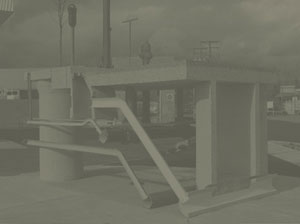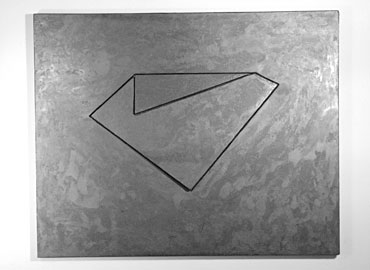For several years beginning in the late 70s work was carried out on a series of low-relief dimensional
drawings, usually formal and self-referential. A neutral surface of graphite and beeswax was devised
which could be brushed onto particle board hot and then ironed flat, producing a highly metallic surface
simultaneously absorbent and reflective. The surface proved restless, thwarting viewer's expectations of
stable spatial position, and allowing the flat elements and the tilted elements to equivocate in a
specular contest of positionality. This technique provided the illusionistic characteristics of
traditional 2-dimensional perspectival picture organization, in visual conflict with physical
extensions into actual space.





3D Drawings
graphite and beeswax on particle board, dimensions variable; c. 1975-80
graphite and beeswax on particle board, dimensions variable; c. 1975-80
gregsnider.ca Copyright © 2007 - Greg Snider.
All Rights Reserved. contact: greg@gregsnider.ca
